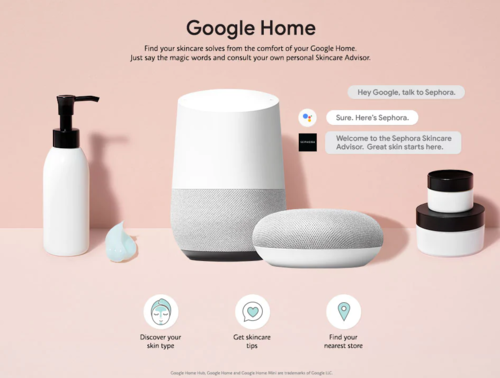Career insights with Ambition podcast
The podcast that dives deep into the defining moments of influential business leaders across technology, accounting and finance.

The podcast that dives deep into the defining moments of influential business leaders across technology, accounting and finance.

The podcast that dives deep into the defining moments of influential business leaders across technology, accounting and finance.

The podcast that dives deep into the defining moments of influential business leaders across technology, accounting and finance.


In the days before the internet, the concept of customer experience was straightforward. Brick-and-mortar businesses would make sure their staff were friendly toward customers, perhaps toss them a free gift with purchase, and make sure they left with a smile on their face.
But like almost everything else in the working world, the internet has changed all that. Now, a customer’s experience starts long before they ever click “purchase” on your website, and it extends long after they’ve navigated away from your page. If you’re not focused on enhancing customer experience in your business, you’ll be left behind by your competitors.
So what is customer experience, and how can you improve it?
Customer experience, also known as CX, is comprised of many different things, but it essentially comes down to how your customers, clients, or audience perceive your brand.
Modern CX can include everything from the layout and design of your website, the marketing emails and campaigns you run, the purchasing technology you use, how your employees interact with customers, and the atmosphere of the physical stores or locations that make up your company.
Customer experience and customer service are very closely related, but there is a slight difference. Customer service is part of the bigger customer experience picture—it relates specifically to the interactions customers have with your employees. Customer experience includes that, along with all of the other touchpoints customers use to assess their relationship with your business.
There is a huge gap between businesses that focus on customer experience vs. those who let it go by the wayside. In fact, a study by Forrester found that, over five years, businesses that put customer experience first enjoyed a 17% rate of growth, compared to just 3% for businesses deemed “CX laggards.”
Enhanced revenue may be the result, but customer experience can positively impact a number of different aspects of your business. Putting strong CX processes in place can:
Help you retain customers
Increase chances of your customers recommending your brand to their network
Improve your online ratings
Provide you with valuable case studies to share
Ease the workload for your customer service team
If you’re looking to improve your own customer experience, it’s a good idea to look at some of the companies out there that have it down pat. Let’s take a look at three of the best, and examine why they perform so well in the CX realm.
Makeup brand Sephora is frequently lauded for its exceptional customer service techniques, and they have their technology to thank for it.
Sephora knows that modern customers depend on easy and frictionless technology experience with the brands they love. That’s why they’ve put so much time and effort into developing things like a Virtual Artist tool to allow customers to “try on” makeup from their mobile device. Most recently, they’ve launched Sephora Skincare Advisor on Google Home, which turns the virtual assistant into an in-home beauty expert.

Not only are these techniques a great way for Sephora to create new touchpoints with their consumers, but they also make life easier for shoppers. In short, everyone benefits.
Here’s the key to good CX: Understanding your customer. You and your team must be able to put themselves fully in the shoes of the consumer, and the best way to do that is to reach out to them directly.
That’s how The Iconic built up its customer experience strategy.
“We do a lot of experiments regarding what our customers need. If you ask the customers what they want, of course, they are going to ask for something that can be quite biased,” The Iconic’s COO, Anna Lee, told CMO. “Our customers range in age from 18-80, and different customers have different needs.”
Using their Net Promoter Score (and a team of 100 data scientists), The Iconic has nailed down exactly what their customers want, weighed it against what was actually possible, and turned that into one of the most-loved customer service experiences in Australia.
The above examples showcase the importance of digital CX, but for businesses that have brick-and-mortar locations, Disney might be the best example of how to deliver a truly magical customer experience in person.
If you’ve ever been to Disney, you know that part of the magic comes from unexpected interactions with staff. It’s not just the lovable characters taking photos with smiling kids—everyone, from the ticket takers to the cleaning staff to the people on stage, is highly trained to seek out and create delightful customer interactions.
If Disney can train so many employees to provide excellent customer service, smaller enterprises can do the same. Putting time and effort into training staff is important, but on top of that, your staff must feel satisfied and engaged at work in order to deliver a positive experience. This means frequently interviewing and surveying your employees, and putting new incentives and benefits in place whenever possible.
Once you understand the value and power of a sound customer experience process, the next step is to start assessing where yours stands currently.
Net Promoter Scores and other customer satisfaction surveys are a good place to start—you need to hear what your CX is like from people who have experienced it first-hand, i.e. your actual customers.
Engage with your staff as well. If you’re a small team, conduct one-on-one interviews and ask your employees where they think customer experience could be improved. If you’re a larger business, you can run an internal survey to gather feedback in bulk.
Once you have identified where the pain points are, it’s time to call in expert help. If you’re a medium-sized business or larger, you will likely need at least one full-time CX person on staff, if not a full team.
These individuals will be charged with collating your customer feedback and turning into actionable plans that will improve your CX overall. With the right people on board, you can turn your lacklustre CX processes into something that brings in more revenue and improves your brand perception forever.
Looking for the right CX candidate to change the game within your business? Ambition works with CX candidates with different levels of experience and is here to help. Get in touch with one of our recruitment experts to kickstart your search today.